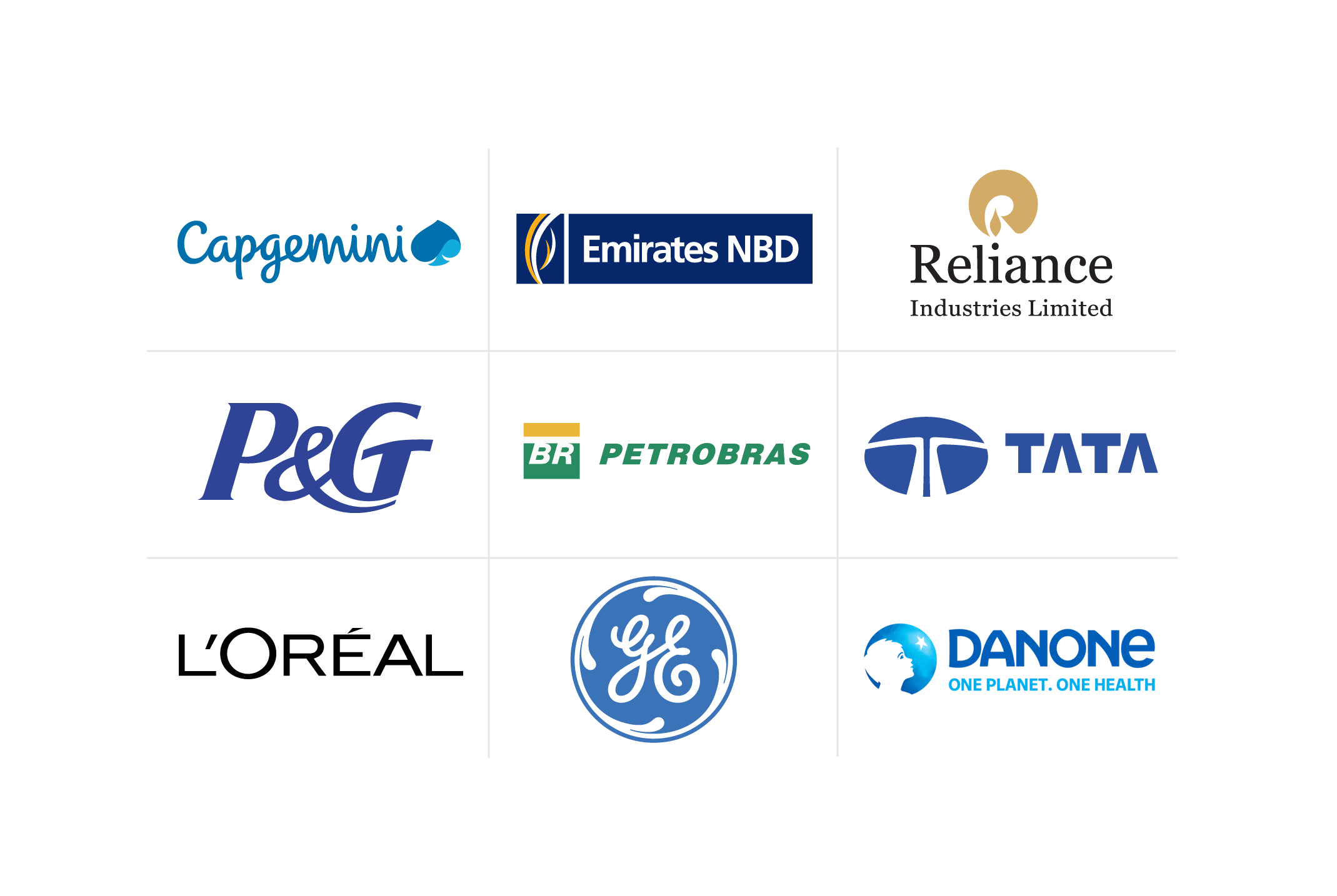Understanding Flight Risk in the Workplace: Strategies for Employee Retention
Retaining your employees starts with engaging your employees. Learn how to increase employee engagement, mitigate employee flight risk, and make your teams happier, more productive, and more profitable.
![[Featured Image] An employee, whom management overlooked as a flight risk, leaves her place of employment with a box of personal belongings as leaders discuss employee retention strategies in the background.](https://d3njjcbhbojbot.cloudfront.net/api/utilities/v1/imageproxy/https://images.ctfassets.net/2pudprfttvy6/1HZSPL4wnlu5fLStPVrhe9/31eb0c20ceaae1abca104b6cd9645256/GettyImages-1446914103.jpg?w=1500&h=680&q=60&fit=fill&f=faces&fm=jpg&fl=progressive&auto=format%2Ccompress&dpr=1&w=1000)
Employee engagement often informs employee retention—in other words, the more your employees engage with their work and love what they’re doing, the more likely they are to stick around and not be a flight risk.
Organizations that follow best engagement practices currently boast annual employee engagement rates of about 70 percent. In contrast, the average employee engagement rate hovers around 33 percent [1].
With such a big difference between the average and the best, it might be tempting to assume it takes a lot of effort and expense to engage employees and prevent employee flight risk. The good news is, though, that’s not always the case. With a few small, strategic changes, you can improve employee engagement, reduce employee turnover, and push your organization into that “best” category.
Introduction to flight risk
If you feel that a particular team member may file their resignation sooner rather than later, that team member is a flight risk. They’re at risk of leaving the company.
Of course, every organization experiences talent turnover; in 2023, the average annual quit rate of employees voluntarily leaving their positions was 2.4 percent [2]. However, it’s beneficial for your team to minimize turnover. High turnover rates can lead to decreased morale and employee engagement among remaining team members due to factors like greater job demands, higher job-related stress, and less organizational support following a turnover.
Retaining employees and mitigating flight risk starts with engaging them and recognizing the early warning signs of disengagement so you can correct that disengagement accordingly.
How should you overcome the signs and keep your teams engaged and intact? A few of the early signs of an employee’s disengagement may include the following:
Lack of satisfaction with the organization
Inability to connect to the organization’s mission
Not feeling as if the organization cares about them on an individual level
Not having the tools to do one’s job
Feeling unsure of one’s role or responsibilities
Factors contributing to flight risk
The elements contributing to flight risk are typically internal and related to the company’s operations and management. Thankfully, many of these factors are in your control and manageable. As mentioned above, job dissatisfaction can be an early warning sign of employee disengagement and flight risk. Factors that influence job satisfaction and employee retention often intrinsically intersect, meaning if employees engage in their role, their flight risk drops substantially.
Influential factors that dictate job satisfaction (or dissatisfaction) include the organization’s culture, leadership quality, and work-life balance. Potential for future job growth and professional development is also essential, though not as important as these three defining factors, which become increasingly important after meeting a compensation threshold.
Identifying flight risk in employees
Use your available tools to proactively gauge employee sentiments and make changes that positively influence employee engagement and satisfaction.
For example, you could conduct regular employee engagement surveys for easy and anonymous insight. When an employee who was previously at flight risk (whether you realized it or not) eventually leaves, ensure your exit interviews garner insightful feedback that can help you learn from the experience. As you gather this information, analyze the trends and metrics to spot patterns and potential areas of concern.
Unless you work on a small, close-knit team, it’s not always easy to automatically identify flight risk in employees. However, your at-risk employees typically want to discuss engagement and job satisfaction and reach a positive solution.
According to one study, more than half of exiting employees say their leaders did not discuss job satisfaction and growth with them during the three months before their exits. Still, half also say that their leaders could have done something to retain them had they known about their issues [3].
As such, if you can identify your at-risk employees and learn more about their needs, you can likely still retain them.
Read more: Empowering Success: A Comprehensive Guide to Workforce Development for Companies
Consequences of employee flight
First, of course, is the cost. In 2019, Gallup estimated that voluntary turnover cost US businesses approximately $1 trillion [3]. Replacing an employee requires investing anywhere from a fraction to twice the employee’s salary. While some of these costs are obvious, such as the costs spent recruiting and costs incurred from lost productivity, other, less visible but still important costs to remember include the cost of lost knowledge and the resulting need to lose time transferring knowledge to existing or new hires.
The impact on team morale and productivity is another element to consider. Following turnover, employees report greater job demands, stress, and less support. Additionally, studies link employee turnover to decreased productivity, as measured by profit margin and customer satisfaction.
Lastly, employee flight does come with its reputational considerations. High attrition rates often become common knowledge, and as potential hires wonder why those high attrition rates exist, you may need help attracting top talent.
Strategies for retaining employees and mitigating flight risk
As discussed, retaining employees starts with engaging them and ensuring that they receive those workplace perks that matter most. The following offers a few places to start.
1. Create a positive and inclusive work environment
Keep creating a positive and inclusive work environment at the forefront of your mind, as a “statistically significant” parallel exists between diversity practices and employee engagement, according to researchers and as reported by Deloitte [4]. Additionally, it’s worth noting that job satisfaction is typically lower in marginalized groups, which could provide impetus for prioritizing this inclusivity.
2. Provide employee well-being and mental health support.
According to the American Psychological Association (APA), in 2022, more than 80 percent of employees looked for workplaces that supported mental health. More specifically, employees were seeking employers that offered flexible work hours, the ability to work remotely, respect for time off, and a four-day work week [5]. These are all well-being and work-life balance-supporting elements that you can consider incorporating into your strategies for promoting greater employee well-being and engagement, even if you cannot accommodate them all.
Employee assistance programs
You might also consider adding an employee assistance program (EAP) to your benefits. EAPs typically include counseling services, which can help employees access mental health care that they otherwise might not. In another report from the APA, more than 90 percent of employees noted it was important to them that their employers valued their psychological well-being and supported their mental health [6].
Whatever specific strategies you ultimately implement, it remains vital that your organization fosters a culture of open communication and support for employee well-being. The APA likewise noted that this support will be a significant factor that employees will consider when planning their next career moves.
3. Offer employee career development and advancement opportunities.
Potential for future growth is a factor that contributes to job satisfaction. After all, employees want to be able to envision their future within your organization if they’re going to stay there. Because of this, it’s essential to create clear career paths within the organization. Doing so gives employees an idea of where to go if they remain within the organization and how to get there. Provide mentorship and coaching programs for further support and insights, encouraging employee-driven goal-setting and professional growth.
4. Provide flexible work arrangements.
Lastly, consider implementing more flexible work arrangements, too. Studies have found that hybrid employees report greater satisfaction than fully remote and fully in-office employees. Providing flexibility, which looks different from business to business, is linked to employees feeling improved control over their workloads, greater motivation and productivity, and reduced turnover.
Is flight risk higher in remote work environments?
Although flexible work arrangements can substantially impact employee engagement and retention, some employers may assume that flight risk is greater in remote work environments. However, that’s not necessarily the case. Remember: studies have found that hybrid employees report greater satisfaction than fully remote and fully in-office employees.
Consider different approaches to ensure greater engagement when working in remote work environments. Building that oh-so-crucial office culture remains vital, but you may need to approach it differently in the remote setting, such as leveraging technology for virtual team-building activities and adjusting communication strategies to engage remote employees more effectively. Video communication, for example, can be more effective at building team rapport and empathy than email, messaging, and voice calls.
Data-driven approaches to addressing flight risk
Human capital management tools can help you assess flight risks, providing you with analytics and data that provide insights into whether or not someone on your team is a flight risk based on factors such as salaries, lack of career growth, demographics, industry comparisons, and more.
Using this data can guide you in implementing actionable strategies. For example, if the data shows that you have multiple team members at flight risk due to a lack of career growth, it might be time to consider implementing a more robust employee development program.
Read more: Your 2024 Guide to Employee Retention
Case studies: Successful flight risk mitigation stories
As an example of successful flight risk mitigation and retention in action, consider the changes US Foods made after encountering retention issues following the COVID-19 pandemic. In this case study, one of US Foods’ most impactful new flight risk mitigation strategies included providing career development and advancement opportunities, with new talent clearly apprised of their job growth possibilities [7].
In another case study, the brand QuickTrip similarly mitigated turnover, adopting a culture based on promoting from within. According to the data, full-time employee turnover at the company was 13 percent at the time of publication, compared to 109 percent industry-wide [8].
Getting started with Coursera
Overcoming flight risks and re-engaging disengaged employees can seem challenging, but you can successfully mitigate potentially adverse effects. With the right changes in approaching your teams’ needs, you can increase employee engagement and reduce flight risk and employee turnover.
For example, consider exploring courses on Coursera that can help you build the leadership skills you and your management teams need to enact employee retention strategies that work—like, for example, the University of Michigan’s Leading People and Teams Specialization or the University of Illinois’ Strategic Leadership and Management Specialization. With either, you can explore the skills and strategies you need to make a tangible, positive impact on your teams.
Additionally, with Coursera for Business, you can offer employees access to valuable courses and learning and development programs to support their aspirations.
Article sources
1. Gallup “Employee Engagement, https://www.gallup.com/394373/indicator-employee-engagement.aspx.” Accessed July 2, 2024.
This content has been made available for informational purposes only. Learners are advised to conduct additional research to ensure that courses and other credentials pursued meet their personal, professional, and financial goals.


